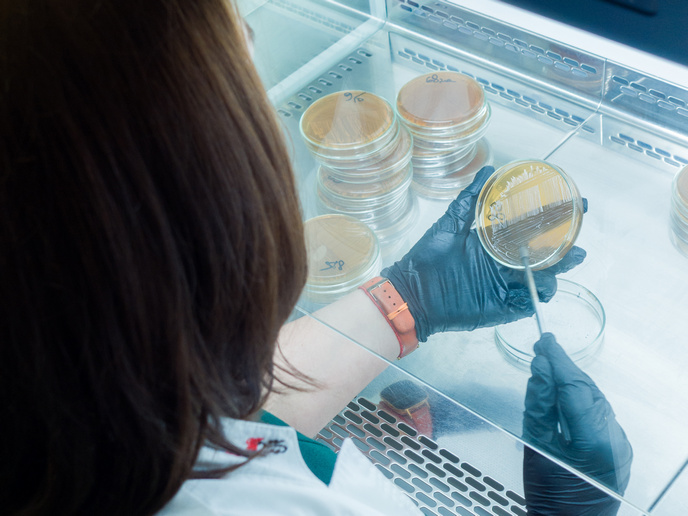Uncovering microbial warfare in biofilm infections
Many microbes live in polymicrobial communities which play a fundamental role in various ecosystems, from soil and water environments to the human body. Within these structured communities, microorganisms engage in close interactions, exchanging substrates and metabolites. Biofilms(opens in new window) represent a prevalent form of microbial life also implicated in pathogenic mechanisms that cause disease. Understanding the dynamics of microbial interactions within biofilms is essential for controlling infections and deciphering bacterial behaviour, especially with respect to human health.
Competitive advantage of bacteriocin-producing strains
Undertaken with the support of the Marie Skłodowska-Curie Actions(opens in new window) (MSCA) programme, the BOB project investigates the role of the antimicrobial peptides bacteriocins within biofilm communities. Conventionally, bacteriocins(opens in new window) are believed to serve as weapons against neighbouring bacterial cells in the fight for common resources. They may also have other ecological functions, for instance facilitating the release of DNA for natural transformation. “Bacteriocins are widely studied for food and health applications and have been traditionally viewed as a bacterial defence mechanism; however, little is known about other functions bacteriocins might play such as their role in biofilms,” explains MSCA research fellow Sara Arbulu Ruiz. Bacteriocins exhibit widespread occurrence as well as remarkable diversity in terms of antimicrobial spectrum and mode of action. The BOB project focused on Streptococcus mutans, a bacterium intricately linked to oral diseases such as periodontitis and dental caries. Through a multi-faceted approach, researchers sought to elucidate the impact of bacteriocins on biofilm formation. They discovered that bacteriocin-producing strains within biofilms had a competitive advantage. Deletion of bacteriocin genes in S. mutans resulted in diminished biofilm-forming capacity, highlighting the potential role of bacteriocins in biofilm dynamics. Moreover, the team established a bacteriocin-biofilm workflow which will serve as a versatile platform for future gene-targeted biofilm studies.
Implications for human health
Accumulating research evidence underscores the connection between bacteriocin producers and the dynamics of biofilm formation. Bacteriocin genes emerge as potential therapeutic targets for biofilm control, offering novel avenues for combatting microbial infections. According to Arbulu Ruiz: “Novel strategies are needed to tackle the antimicrobial resistance crisis – in addition to the bacteriocins themselves as antibiotic agents, bacteriocin genes could represent potential therapeutic targets for biofilm control.” By elucidating the intricate interplay between bacteria in biofilms, the BOB project paves the way for innovative strategies in healthcare and beyond. Understanding how bacteriocins impact biofilm dynamics can inform the design of targeted antimicrobial therapies that disrupt biofilm formation or enhance the susceptibility of biofilm-associated pathogens to conventional treatments. Furthermore, the application of bacteriocins in food preservation and industrial processes may help mitigate the spread of foodborne pathogens and reduce the prevalence of microbial contamination in various settings, thereby enhancing food safety and quality. Looking ahead, the BOB project aims to investigate bacteriocin-mediated biofilm interactions in terms of their broader ecological significance. Further experiments seek to delve deeper into the mechanisms underlying biofilm-related food spoilage. Overall, the BOB project bridges the gap between fundamental research and real-world applications, offering significant insight into pathways for tackling biofilm-associated infections.







